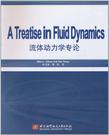流体动力学专论
出版时间:2011-6 出版社:北京航空航天大学出版社 作者:周文隆,熊焰 著 页数:315
内容概要
A Treatise in Fluid Dynamics is a
textbook for beginning engineering students who have background of
basic calculus and physics. This textbook follows a typical
sequence of topics of dynamics of fluids by starting with an
introduction to the subject, concentrating on terminologies, simple
concepts, and clarifying adoption of the system and control volume
approach to describe the motion of the fluid. It then follows by
unsteady im-pressible incompressible flows, impressible potential
flows, numerical computation of fluid dynamic problems,viscous
flows, and open channel flows. A large numbers of examples, such as
sluice gate, a sharp crested weir, jet-plate interaction, etc. ,
are presented throughout the textbook to emphasize the applications
of fluid dynamics to various practical problems. Some simple
Fortran computer programs are provided for calculating
incompressible potential flow past simple geometrical bodies based
upon surface source distributions and other problems. As this
textbook is the extended version of the lecture notes prepared by
the first author throughout his career of teaching and research in
the areas of gas dynamics, fluid dynamics and thermodynamics at the
University of Illinois at Urbana-Champaign and Florida Atlantic
University, it can serve as a useful reference book for graduate
students and researchers in the related technical fields.
书籍目录
CHAPTER 1 BASIC EQUATIONS GOVERNING THE FLOW OF
FLUIDS
CHAPTER 2 APPLICATION OF BERNOULLI's PRINCIPLE TO SOME
INCOMPRESSIBLE FLOWS
CHAPTER 3 POTENTIAL FLOW OF AN IDEAL FLUID
CHAPTER 4 NUMERICAL COMPUTATIONS ON FLUID DYNAMIC
PROBLEMS——WITH EMPHASIS ON INVISCID FLOWS
CHAPTER 5 VISCOUS FLOWS INTRODUCTION
CHAPTER 6 OPEN CHANNEL FLOWS INTRODUCTION
APPENDIX A A REVIEW OF VECTOR-ANALYSIS
APPENDIX B VARIOUS VECTOR EXPRESSIONS IN ORTHOGONAL
CURVILINEAR SYSTEM OF COORDINATES
APPENDIX C MATHEMATIC PROCEDURE TO COMPUTE VENA-CONTRACTING
COEFFICIENTS
章节摘录
版权页:插图:To study the motion of a fluid, we must identify a fluid element and describe the flowevents associated with it. One way of doing this is to identify a particular element of fluidand describe the detailed motion of this element. This is the familiar kind of descriptionadopted to study the dynamics of a particle or a rigid body, and is called the particle orLagrangian approach. However, this is not a convenient way to study the motion of a fluid.Another way to describe a fluid motion is to specify the flow properties of the fluid at aspecific location within a physical region; this is the field or Eulerian approach~ and isadopted here to study the motion of the fluid. The weather map is a good example of theEulerian approach. Since all principles of conservation are always referring to a specific massof fluid(the Lagrangian approach), and we shall adopt the Eulerian approach in our study,we must discuss these two schemes in detail and establish the relationship of transformationbetween them.1.2. 1 Lagrangian FormulationWithin the Lagrangian scheme, we focus our attention on a particular element of thefluid and describe its flow events as time proceeds. For example, we may express the spatiallocation of an element of fluid as a function of time, t. X(t), Y(t), and Z(t). The velocityand acceleration of this element of fluid is found by differentiating these functions withrespect to t. We may also use functions of the form P(t), T(t), and p(t) to express,respectively, the pressure, temperature, and density of this element of fluid as functions oftime. However, to make this representation meaningful, we must have some means toidentify these quantities for each fluid element in the flow field. One way of identifying afluid element is to define its spatial location at a given time.
编辑推荐
《流体动力学专论》由北京航空航天大学出版社出版的。
图书封面
评论、评分、阅读与下载
用户评论 (总计1条)
- enjoyit,doit,fallinloveit
